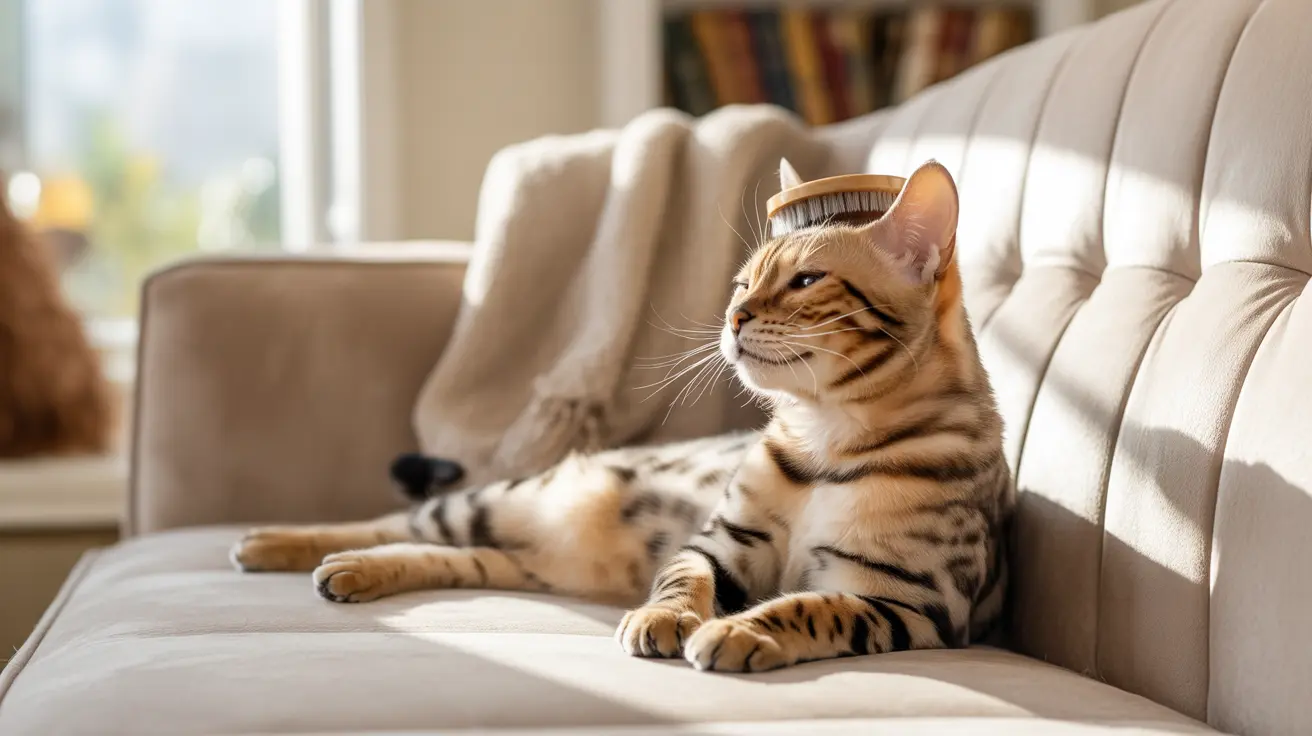Understanding Your Cat's Natural Grooming Behavior
Cats are naturally meticulous groomers, spending up to 50% of their waking hours maintaining their coat. Brushing mimics their natural grooming behavior and can be a source of comfort, reminiscent of their mother's grooming during kittenhood.
However, each cat's response to brushing is unique and often influenced by their early experiences, personality, and physical sensitivity.
Signs Your Cat Enjoys Being Brushed
Many cats display clear signals when they're enjoying their brushing session:
- Purring contentedly
- Leaning into the brush
- Rolling over to expose more areas
- Rubbing against the brush
- Seeking out grooming tools
Common Reasons Some Cats Dislike Brushing
Not all cats are immediate fans of being brushed. Several factors can contribute to brush aversion:
- Previous negative experiences
- Sensitive skin or medical conditions
- Inappropriate brushing technique
- Wrong type of brush for their coat
- Lack of early exposure to grooming
Health Benefits of Regular Brushing
Regular brushing offers numerous health advantages for your cat:
- Reduces hairball formation
- Prevents painful mat development
- Distributes natural skin oils
- Improves circulation
- Allows early detection of skin issues
- Decreases household pet hair
Creating Positive Brushing Experiences
Making brushing enjoyable for your cat requires patience and the right approach:
- Start with short sessions
- Use treats as positive reinforcement
- Choose quiet, calm times for grooming
- Let your cat sniff and investigate the brush
- Begin with their favorite petting spots
- Never force or restrain them
Frequently Asked Questions
Do most cats enjoy being brushed, and how can I tell if my cat likes it?
While many cats enjoy being brushed, individual preferences vary. Signs of enjoyment include purring, relaxed body language, and seeking out the brush. If your cat shows signs of stress like tail swishing or growling, they may not enjoy the experience.
What are the health benefits of regularly brushing my cat's fur?
Regular brushing reduces hairballs, prevents matting, distributes natural oils, removes dead fur and dander, and allows early detection of skin problems or parasites. It also helps maintain a healthy, shiny coat.
How often should I brush my cat, and does it depend on their breed or coat type?
Brushing frequency depends on coat type: long-haired cats need daily brushing, medium-haired cats require 2-3 times weekly, and short-haired cats typically need weekly brushing. Increase frequency during shedding seasons.
How can I make brushing a positive and stress-free experience for a cat that is nervous or dislikes it?
Start slowly with short sessions, use treats for positive reinforcement, let them investigate the brush, and begin with areas they enjoy being petted. Never force brushing, and always respect their boundaries.
What are the best grooming tools and techniques to use for different types of cat fur?
Use slicker brushes for long-haired cats, pin brushes for medium hair, and soft bristle brushes for short hair. Always brush in the direction of fur growth and be gentle. Grooming gloves can work well for sensitive cats.
Conclusion
While not every cat naturally enjoys being brushed, with patience, proper technique, and positive reinforcement, most cats can learn to tolerate or even enjoy regular grooming sessions. Understanding your cat's preferences and respecting their boundaries will help create a positive brushing experience that benefits both you and your feline companion.
Remember that consistent, gentle grooming not only maintains your cat's physical health but also strengthens the bond between you and your pet. Start slowly, stay patient, and celebrate small progress as you work toward making brushing a regular part of your cat's routine.






